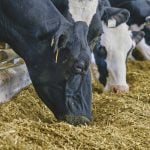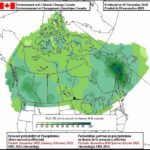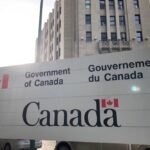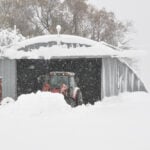
Weather
Forecast: Expect a shift in weather pattern
Covering the period from December 9 to December 16
It wasn’t surprising that the weather models did such a good job predicting last week’s early-winter heat wave. The models had been consistently showing this happening for a while and they are usually correct when it comes to large weather features like this. For this forecast period, it looks like the weather pattern is going
Forecast: Mild early-winter weather continues
Covering the period from December 2 to December 9
Once again, the weather models did a fairly good job forecasting the general weather pattern across our region over the last week. Whenever we are dealing with weak weather systems it can be tough to get the timing right, but in those instances, being off by 12 to 24 hours when there are only light
Warm, dry weather expected into December
Computer modelling suggests precipitation closer to average levels in January
What a difference a month can make. If you remember back to October, it was a cold and snowy, yet dry month. Temperatures across southern and central Manitoba averaged from 2.5 to 3.5 C below the long-term average, with precipitation also coming in well below average. Jump ahead 30 days and we have gone from

Weather school: How do jet streams form?
Jet streams form where we have sharp, or quick, changes in air temperatures
Before we get back into weather school, I feel I need to touch on a couple of weather topics. First, global temperatures for October are in, and this October came in as the fourth warmest on record, according to both NOAA and NASA, the third warmest by the European Copernicus Climate Change Service, and the

AgriStability proposal could have hidden cost, Pedersen warns
Manitoba's ag minister warns Bibeau's plan may hurt crop insurance, AgriInvest funding
Ottawa’s proposal for an improved AgriStability program could give farmers short-term gain for long-term pain, Manitoba’s agriculture minister Blaine Pedersen warns. At the online federal-provincial-territorial agriculture ministers’ meeting on Friday, federal Agriculture Minister Marie Claude Bibeau proposed dropping AgriStability’s maximum reference margin, and increasing the compensation rate from 70 to 80 per cent retroactively this

Seasonal forecast calls for more snow
MarketsFarm — Most of Canada should see above-normal snowfall over the next three months, according to updated seasonal forecasts released Monday from Environment Canada. Weather maps show a 40 to 60 per cent probability of more precipitation than normal across much of the country from December through February, with the heaviest accumulations expected in Quebec.

StatsCan report to provide clarity on 2020 crop production
MarketsFarm — Market participants and producers will be looking to Statistics Canada’s principal field crop report, due out Thursday, for clarity regarding 2020 crop yields. “We’re looking to see how severely the heat damaged the crop, and how yield estimates were tempered later in the growing season,” said Jerry Klassen, an analyst in Winnipeg. Klassen
Forecast: Mild, with not much snow expected
Covering the period from November 25 to December 2
Despite not a lot of confidence in last issue’s forecast, the weather models actually did a pretty darned good job. We saw the mild temperatures early in the period followed by the slight cool-down. The models were then showing milder temperatures moving in for the first half of this week, with the chance of a

When should we expect winter to start?
If winter as we know it begins before or after these dates, call it an unusual year
Every year around this time I get a lot of questions asking when we should expect the first snowfall or when I expect that winter will begin. So, while this article was supposed to continue our look at atmospheric oscillations — and in particular, jet streams — I felt we could afford to take a

Most of Prairies already covered in snow
MarketsFarm — Most of the Canadian Prairies were already blanked in snow by late November, with the deepest snowpack in Alberta and Saskatchewan, according to data compiled by Environment Canada and the U.S. National Oceanic and Atmospheric Administration (NOAA). Aside from the Rocky Mountains and some areas around the Great Lakes, the U.S. was largely







